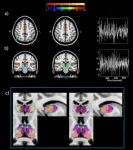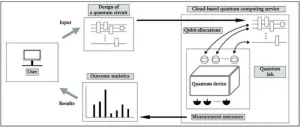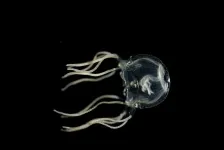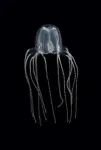The role of the locus coeruleus. A blue stain linked to sleep
Research conducted by researchers at the University of Liège (BE) Institute, using ultra-high field 7 Tesla MRI, are providing a better understanding of how sleep is regulated
2023-09-22
(Press-News.org)
A study conducted by researchers at the University of Liège (BE) Institute, using ultra-high field 7 Tesla MRI, are providing a better understanding of how sleep is regulated.
We've known for a long time that sleep is good for the brain. We also know that light is not just for seeing, but also plays an important role in other aspects such as mood. What we don't know is how all this happens in our brains. Two separate studies, carried out by researchers at the University of Liège using the 7 Tesla MRI on the GIGA-Centre de Recherche du Cyclotron platform, offer the premises of an explanation.
A scientific team from the ULiège Cyclotron Research Centre /In Vivo Imaging (GIGA-CRC-IVI) has just demonstrated that the quality of our REM sleep (the part of sleep during which we dream the most) is linked to the activity of the locus coeruleus. This small brain nucleus, the size of a 2cm-long spaghetti, is located at the base of the brain (in the brainstem). The locus coeruleus - Latin for "blue spot" - owes its name to its color when observed in autopsy. It projects to just about every area of the brain (and to the spinal cord) to secrete a neuromodulator called noradrenaline. Noradrenaline is not only important for stimulating neurons and keeping them awake, but also for a whole series of cognitive processes such as memory, emotional processing, stress and anxiety. Its stimulating activity must diminish to initiate sleep and stop to allow REM sleep. This allows REM sleep to work without noradrenaline, sorting out the synapses that need to be retained or eliminated during sleep and enabling a new day, full of new experiences," explains Gilles Vandewalle, co-director of the GIGA CRC-IVI.
Animal research has already shown that the functioning of this small nucleus is essential for sleep and wakefulness. In humans, little has been verified because the small size of the nucleus and its deep position make it difficult to observe it in vivo with conventional MRI,” explains Ekaterina Koshmanova, a researcher in the laboratory and first author of the article published in JCI Insight. Thanks to the higher resolution of 7 Tesla MRI, we were able to isolate the nucleus and extract its activity during a simple cognitive task during wakefulness, and thus show that the more reactive our locus coeruleus is during the day, the poorer the perceived quality of our sleep and the less intense our REM sleep”. This seems to be particularly true with advancing age, as this effect was only detected in the individuals aged between 50 and 70 included in the study and not in young adults aged between 18 and 30. This finding could explain why some people become progressively insomniac with age. These initial results also lay the foundations for future studies on the activity of this small nucleus during sleep and the role it could play in insomnia and in the link between sleep and Alzheimer's disease.
END
ELSE PRESS RELEASES FROM THIS DATE:
2023-09-22
Jupiter’s moon Europa is one of a handful of worlds in our solar system that could potentially harbor conditions suitable for life. Previous research has shown that beneath its water-ice crust lies a salty ocean of liquid water with a rocky seafloor. However, planetary scientists had not confirmed if that ocean contained the chemicals needed for life, particularly carbon.
Astronomers using data from NASA’s James Webb Space Telescope have identified carbon dioxide in a specific region on the icy surface of Europa. Analysis indicates that this carbon likely originated in the subsurface ocean and ...
2023-09-22
Local turtles facing extinction within a decade due to urban growth, says uOttawa study.
Urban sprawl and insufficient relief measures have left an Ottawa-area freshwater turtle facing extinction within the decade, says new research from the University of Ottawa and Trent University, which tracked changes to the turtle’s habitat over a 10-year period.
Specifically, the development of Terry Fox Drive in the city’s west end has led to a dangerous decline in the Blanding’s turtle’s (Emydoidea blandingii) habitat, leading to a 70% decline in adult population size, despite mitigating measures such as wildlife fencing, new wetlands ...
2023-09-22
New research conducted at the University of Liège, using ultra-high field 7 Tesla MRI, provides a better understanding of how light stimulates our brain and could provide new insights into how it works.
A research team at the ULiège GIGA Institute tried to understand better how light stimulates our cognition. Light acts like a cup of coffee and helps keep us awake. That's why we recommend not using too much light on our smartphones and tablets in the evening. This can disrupt our sleep. On the other hand, the same light can help us during the day. Many studies have shown that good lighting can help students in schools, ...
2023-09-22
Glass, despite its apparent transparency and rigidity, is a complex and intriguing material. When a liquid is cooled to form a glass, its dynamics slows down significantly, resulting in its unique properties.
This process, known as “glass transition”, has puzzled scientists for decades. But one of its intriguing aspects is the emergence of "dynamical heterogeneities," where the dynamics become increasingly correlated and intermittent as the liquid cools down and approaches the glass transition temperature.
In a new study, researchers propose a new theoretical framework to explain these dynamical heterogeneities in glass-forming ...
2023-09-22
A quantum machine can drastically speed up certain kinds of computation, but only if two or more quantum bits in the machine are entangled---that is, capable of displaying related behavior despite being separated. Seeking a way for users of cloud-based quantum computing services to detect qubit entanglement, Jiheon Seong and Joonwoo Bae of the Korea Advanced Institute of science and Technology developed and tested an entanglement witness circuit. It works to certify entanglement even when the cloud-based service allows only limited control ...
2023-09-22
A new research paper published in Science Advances reveals how changes in the size of the Yangtze River watershed may have led to the carving of deep canyons.
In this study, UNC-Chapel Hill professor Eric Kirby and his co-authors explore the impact of drainage basin expansion on the growth of the Yangtze River.
“This study presents a new model for when and how the Yangtze River was born,” said Kirby, “The Yangtze is one of the world’s great rivers, rising on the Tibetan Plateau at altitudes over 17,000 feet and descending ...
2023-09-22
When you see a familiar face upright, you’ll recognize it right away. But if you saw that same face upside down, it’s much harder to place. Now researchers who’ve studied Claudio, a 42-year-old man whose head is rotated back almost 180 degrees such that it sits between his shoulder blades, suggest that the reason people are so good at processing upright faces has arisen through a combination of evolution and experience. The findings appear September 22 in the journal iScience.
“Nearly everyone has far more experience with upright faces and ancestors whose reproduction ...
2023-09-22
Even without a central brain, jellyfish can learn from past experiences like humans, mice, and flies, scientists report for the first time on September 22 in the journal Current Biology. They trained Caribbean box jellyfish (Tripedalia cystophora) to learn to spot and dodge obstacles. The study challenges previous notions that advanced learning requires a centralized brain and sheds light on the evolutionary roots of learning and memory.
No bigger than a fingernail, these seemingly simple jellies have a complex visual system with 24 eyes embedded in their bell-like body. Living ...
2023-09-22
Jellyfish are more advanced than once thought. A new study from the University of Copenhagen has demonstrated that Caribbean box jellyfish can learn at a much more complex level than ever imagined – despite only having one thousand nerve cells and no centralized brain. The finding changes our fundamental understanding of the brain and could enlighten us about our own mysterious brains.
After more than 500 million years on Earth, the immense evolutionary success of jellyfish is undeniable. Still, we've always thought of them as simple creatures with very limited learning abilities.
The prevailing opinion is that ...
2023-09-22
About The Study: In this study using a behavioral experiment designed to mimic a real-world imposter scam among 644 older adults, a sizable number of older adults engaged without skepticism. The results suggest that many older adults, including those without cognitive impairment, are vulnerable to fraud and scams.
Authors: Lei Yu, Ph.D., of Rush University Medical Center in Chicago, is the corresponding author.
To access the embargoed study: Visit our For The Media website at this link https://media.jamanetwork.com/
(doi:10.1001/jamanetworkopen.2023.35319)
Editor’s ...
LAST 30 PRESS RELEASES:
[Press-News.org] The role of the locus coeruleus. A blue stain linked to sleep
Research conducted by researchers at the University of Liège (BE) Institute, using ultra-high field 7 Tesla MRI, are providing a better understanding of how sleep is regulated








